Testing
Test setup:
| AXUS Fit 500 | |
| HDD | Western Digital WD1600 Caviar 160GB |
| Seagate Barracude 7200.10 160GB | |
| Motherboard | GA-EP45-DS3R |
| CPU | Intel Q9400 |
While I’m aware that it’s preferable to have two matching hard drives, this is all I could come up with. This shouldn’t interfere with results by much, and if anything will show that the FiT 500 will perform better with faster, matching drives.
The Testing Procedure
I will test out both USB and eSATA using several pieces of software. While eSata is definitely what you are going to want to use for this drive, not all computers have it, so USB is a great addition for those RAID travelers (RAIDers?). We will compare the results to what AXUS says should be attainable. I will go over all of the benchmark results at the end.
SiSoft Sandra
SiSoft Sandra is one of our favorite benchmarks to run as it gives us an overall picture view of performance and speed. It contains tests for all types of hardware, and comes with built in sets of data for hardware against which you can compare the performance of your hardware to.
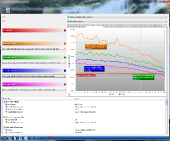 |
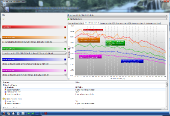 |
| USB | eSata |
DataMarck
DataMarck tests the read rate, as well as the seek time of the drive.
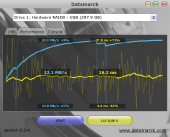 |
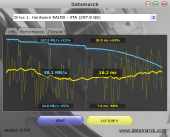 |
| USB | eSata |
HD Tune:
HD Tune is also one of our favorite benchmarking tools. It provides detailed information about the drive features in addition to measuring the read and write speeds.
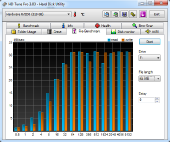 |
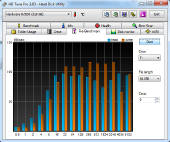 |
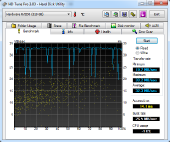 |
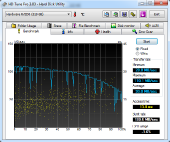 |
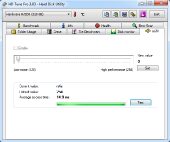 |
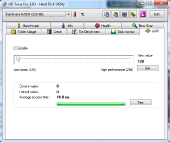 |
| USB | eSATA |
ATTO Disk Benchmark:
ATTO Disk Benchmark is a popular and free program used to measure transfer rates across specified lengths. The bandwidth results here are not necessarily entirely reliable for reporting the maximum drive speeds, but it does help convey results of the bandwidth for different file sizes, so it’s best to view ATTO in the context of throughput or IOPS (Input/Output Operations per Second) performance.
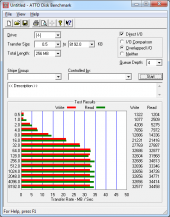 |
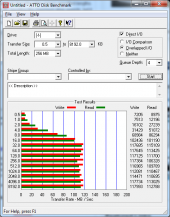 |
| USB | eSata |
Results
eSata wins!!! But no, seriously, that was to be expected and is not what we are testing. Through USB, we received results of approximately 32MB/s read and write which isn’t bad for USB. RAID0 through USB 2.0 is not a bad option if you are in love with USB, or don’t have eSATA, but I would not RAID0 through USB only, because it really just isn’t worth it. Firewire and eSATA are MUCH faster. That said, eSATA scored approximately 110MB/s read and right, which according to SiSoft, is on par with internal RAID with this caliber of drive. Access times through USB and eSATA were very similar at about 14ms. When we compare the eSATA results with AXUS’s chart we see that our test fell very short, but if we compare USB results, we see very close numbers. This leads to me to believe that newer and faster drives will get much better results, but until I can pop in two 1.5TB drives in there, I could very well be wrong.

Conclusion
RAID is a very neat thing. With it you can get some great speeds on the cheap, and get some automated redundancy as well. External RAID enclosures are definitely a great idea for professionals that use many drives and maybe want to move with their RAID, or don’t want to have to open up their rig because of a failure. Hot-swapping is definitely a great feature and tool for the real world. While I did have a few issues in the beginning, the AXUS FiT 500 is a very good piece of hardware. The tools for RAID setup are very good and simple to use even if they aren’t obvious without the manual. The AXUS FiT 500 is not a cheap enclosure either running in at $499 and only available in the USA from one seller (here is the buy page from AXUS), but it does have 5 bays, which is one more than similar products of the same value; keep in mind that AXUS is also a subsidiary of ASUStek, which we all know and love for their quality products, so the price is most definitely worth it. Lack of Firewire 800 on this model is also something of a nuisance for me as well, though eSATA is much faster. Overall, I really like the FiT 500 and would definitely recommend you consider it as an option for your next RAID enclosure.

[…] TechwareLabs examines the AXUS FiT 500 RAID box […]
[…] Link: http://www.techwarelabs.com/axus-fit-500/ […]
[…] AXUS FiT 500 RAID box @ Techware Labs – Thecus N7700 Ultimate NAS Server @ Virtual-Hideout – Seagate Barracuda XT 2TB HDD @ Neoseeker – […]
[…] TechwareLabs plays with the AXUS FiT 500 RAID box […]
[…] AXUS FiT 500 RAID box @ TechwareLabs […]